[Home] [Bio] [Jelly Roll Blues] [Robert Johnson] [Dave Van Ronk] [Narcocorrido] [Dylan Goes Electric] [Beatles/Pop book] [The Dozens] [The Blues] [Josh White] [Hitchhiking] [The Blues] [Other writing] [CD and album projects] [Joseph Spence]
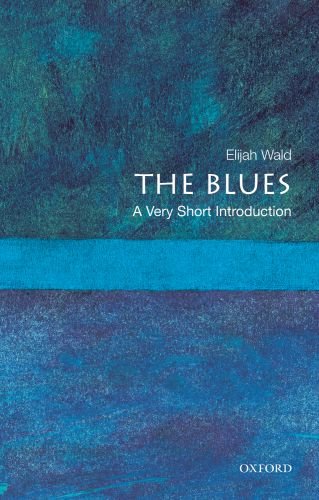 The Blues: A Very Short Introduction
The Blues: A Very Short Introduction
Oxford University Press, 2010
"the most illuminating short treatment of the blues ever published."
--The Wall Street Journal
"one of the most valuable books about the blues to be published in the last decade.... Wald builds on his earlier work to give us a concise, comprehensively informed history of the blues from the turn of the 20th century to the present day."
--Terry Teachout, Commentary
"Introductions to the blues tend to recirculate the stale air of recieved opinion rather than open a window to fresh ideas. In Elijah Wald the reader will find a different kind of guide--crisp, clear, knowledgeable, and, above all, independent-minded."
--Tony Russell, author of The Penguin Guide to Blues Recordings.
"a masterly demonstration of how to get a quart into a pint pot.... a concise account written by someone who knows enough to precis what he knows effectively, a much under-rated skill.... It should be in every school and college library in the civilised world."
--Howard Rye, Blues & Rhythm
"Elijah Wald provides a wonderfully nuanced introduction to the history and legacy of blues music and musicians..., offering a complex but eminently readable chronology that takes account of social, political, commercial, and technological developments and correctly foregrounds the profound influence blues sounds and sentiments have had on jazz, country, rock, R&B, and rap."
--David Borgo, University of California San Diego
Like the other books in Oxford's "Very Short Introduction" series, this volume is designed to provide a brief but not dumbed-down overview of its subject. It starts with a quick note about the various definitions of blues, then is divided into two sections: a straightforward chronological history and three chapters that place blues in a broader cultural context by relating the style to jazz and country music and exploring its poetic use of language, roughly as follows:.
A Short History of Blues
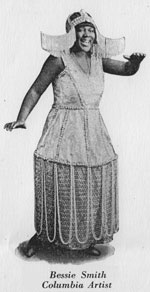 The first three chapters follow standard divisions of blues history: Roots of the Blues, Prewar Blues, and Modern Blues. They give equal weight to folk and pop styles, starting with the music's roots in African traditions and rural dance music, minstrelsy and professional performance, and relating it to field hollers, ragtime, and spirituals.
The first three chapters follow standard divisions of blues history: Roots of the Blues, Prewar Blues, and Modern Blues. They give equal weight to folk and pop styles, starting with the music's roots in African traditions and rural dance music, minstrelsy and professional performance, and relating it to field hollers, ragtime, and spirituals.
The second chapter begins with a section titled Early Blues Queens and the Rise of "Race Records. This covers the blues recording boom sparked in 1920 by the success of Mamie Smith's "Crazy Blues," following it south in search of deep stylists such as Bessie Smith and Ma Rainey, and noting the arrival of the first male blues record stars, Papa Charlie Jackson and Lonnie Johnson.
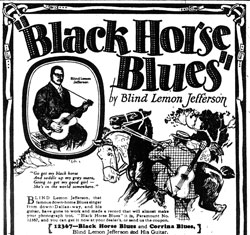 The next section, titled Country Blues, begins with the discovery of Blind Lemon Jefferson and the brief vogue for southern, rural-sounding, idiosyncratic singers and guitarists. It provides a rough sense of the major blues regions--Texas, Mississippi, and the Piedmont--and some of the most important artists from each, such as Texas Alexander, Charlie Patton, Blind Blake, and Blind Willie McTell.
The next section, titled Country Blues, begins with the discovery of Blind Lemon Jefferson and the brief vogue for southern, rural-sounding, idiosyncratic singers and guitarists. It provides a rough sense of the major blues regions--Texas, Mississippi, and the Piedmont--and some of the most important artists from each, such as Texas Alexander, Charlie Patton, Blind Blake, and Blind Willie McTell.
Urban Blues completes the picture of the period before World War II, covering the piano and guitar duet style pioneered in the late 1920s by Leroy Carr and Scrapper Blackwell's lilting "How Long--How Long Blues" and the upbeat hokum of Tampa Red and Georgia Tom's "It's Tight Like That." In the 1930s the urban studios of St. Louis and Chicago shaped a more streamlined blues style, as commercial trends in the Depression pushed the genre toward a uniform sound and transformed it into the United States' defining late-night barroom and party music.
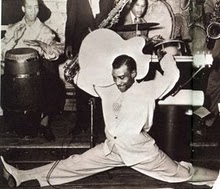 In the same period, blues found a new impetus in mainstream urban pop styles such as swing, the vocal power of Kansas City shouters like Big Joe Turner, the upbeat jive of Louis Jordan, and the fiery balladry of Dinah Washington. In the 1940s, when wartime industries attracted a flood of workers to Los Angeles and Oakland, California became the center of a new approach, The West Coast Sound, exemplified by the mellow vocals of Charles Brown and the first electric guitar hero, T-Bone Walker.
In the same period, blues found a new impetus in mainstream urban pop styles such as swing, the vocal power of Kansas City shouters like Big Joe Turner, the upbeat jive of Louis Jordan, and the fiery balladry of Dinah Washington. In the 1940s, when wartime industries attracted a flood of workers to Los Angeles and Oakland, California became the center of a new approach, The West Coast Sound, exemplified by the mellow vocals of Charles Brown and the first electric guitar hero, T-Bone Walker.
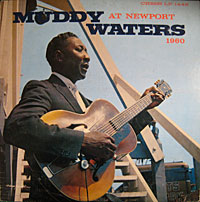 By the late 1940s the swing era was ending, and blues took on a new prominence in African American popular culture with the rise of the stripped-down combo sound that is remembered as Rhythm and Blues. Innovative regional scenes cropped up in New Orleans and Memphis, but this period's most hallowed sound is The Chicago Style exemplified by Muddy Waters, Howlin' Wolf, and Little Walter, along with the raw down-home electricity of John Lee Hooker and Lightnin' Hopkins.
By the late 1940s the swing era was ending, and blues took on a new prominence in African American popular culture with the rise of the stripped-down combo sound that is remembered as Rhythm and Blues. Innovative regional scenes cropped up in New Orleans and Memphis, but this period's most hallowed sound is The Chicago Style exemplified by Muddy Waters, Howlin' Wolf, and Little Walter, along with the raw down-home electricity of John Lee Hooker and Lightnin' Hopkins.
Blues moved still further into the mainstream in the mid-1950s, a development covered in Rock 'n' Roll Arrives, which also touches on the arrival of B.B. King, Ray Charles, and the beginnings of soul music. In the 1960s, white urbanites and college students discovered older styles in The Folk-Blues Revival and the British Invasion sparked a wave of Blues-Rock, both of which have influenced the many ongoing evolutions that are all-to-briefly covered in The Blues Today.
Blues in American Culture
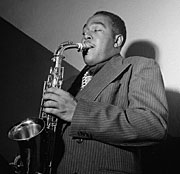 The book's second half tries to provide a sense of how deeply blues has infused virtually all American culture by looking at the music's importance in areas that are often glossed over in genre-focused surveys. Blues and Jazz looks at the ongoing importance of blues in the evolution of jazz, from the early New Orleans styles through the big swing bands, the harmonic innovations of Charlie Parker, the "free jazz" of Ornette Coleman, hard bop, and contemporary singers such as Cassandra Wilson.
The book's second half tries to provide a sense of how deeply blues has infused virtually all American culture by looking at the music's importance in areas that are often glossed over in genre-focused surveys. Blues and Jazz looks at the ongoing importance of blues in the evolution of jazz, from the early New Orleans styles through the big swing bands, the harmonic innovations of Charlie Parker, the "free jazz" of Ornette Coleman, hard bop, and contemporary singers such as Cassandra Wilson.
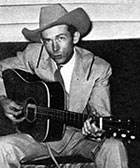 This half's second chapter moves back to the rural South, looking at the ongoing links between Blues and Country Music. This part of the story is in some ways as much about the effects of segregation as about musical styles, tracing the overlapping influences of white and black rural singers and placing performers such as Jimmie Rodgers and Hank Williams in a blues context.
This half's second chapter moves back to the rural South, looking at the ongoing links between Blues and Country Music. This part of the story is in some ways as much about the effects of segregation as about musical styles, tracing the overlapping influences of white and black rural singers and placing performers such as Jimmie Rodgers and Hank Williams in a blues context.
A final section on The Language and Poetry of the Blues looks at the lyrical richness of the blues tradition, exploring the way blues composers have dealt with themes as subtle as the loneliness of a breaking dawn and as earthy as the smell of a cheating lover.
A few recommendations of further reading and an index wrap things up, extending the total volume to the permitted limit of 140 pages--a "very short introduction" indeed, but hopefully a useful guide for newcomers with some interesting tidbits for more knowledgeable music fans.